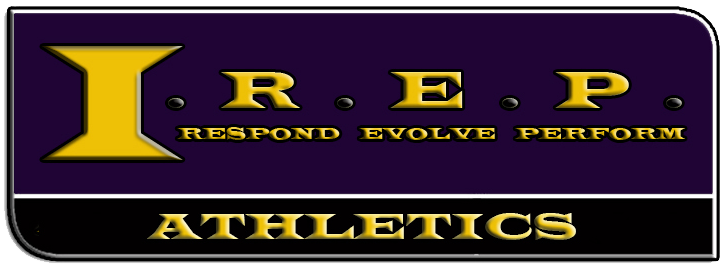It’s important to set realistic goals and be patient. Success in triathlon doesn’t happen overnight. Assess your initial objectives. Were they attainable? Are they still relevant to your current level of fitness? Adjusting your goals to be more realistic can reframe your mindset and reignite your motivation.
Doing the same workouts day in and day out can lead your body and mind to a standstill. By mixing up your routine, you challenge your body in new ways, which can lead to further adaptations and improvements. Consider incorporating different types of workouts like hill repeats, interval training, or brick sessions.
Dial in on Your Nutrition
Instead of a one-size-fits-all approach, consider the specific demands of your training sessions when planning your diet. During heavy training periods, your carbohydrate intake should increase to meet the energy demands. Protein intake should be spread out throughout the day to promote continuous muscle recovery, with a focus on post-workout meals to aid in repairing muscle tissue. Healthy fats should be included but in moderation.
Eating a balanced meal 2-3 hours before training provides the fuel needed for the session. Following up with a snack or meal containing both carbohydrates and proteins within 30 minutes post-workout can greatly enhance recovery by replenishing glycogen stores and starting the muscle repair process.
Triathletes should ensure they consume enough water before, during, and after workouts to maintain optimal body function. Dehydration can lead to a decrease in performance and may increase the risk of injury.
Pay attention to micronutrients— vitamins and minerals that support various bodily functions. Iron, calcium, magnesium, and potassium are just a few examples of micronutrients that play an important role in athletic performance.
Consuming fewer calories than you expend can lead to fatigue and poor recovery, whereas excessive calorie intake can result in unwanted weight gain. Finding the right balance based on your training load is necessary.
Cravings, feelings of fatigue, or even mood changes can be indicators of nutritional deficiencies or imbalances. Be responsive and if necessary, seek the advice of a sports nutritionist to ensure your diet is meeting all your training needs.
Strength Training
If you have been self-coaching and hit a plateau, it might be time to consult a professional coach. They can offer a fresh perspective and specialized knowledge to overhaul your training plan. Personal coaches can pinpoint areas of improvement that you might not see and can tailor training to your specific needs.
Conducting regular fitness tests can be a reliable way to monitor your progress and adjust your training based on the results. Tests like time trials in swimming, cycling, or running help determine your current fitness level and inform whether your training is effective or if it needs tweaking.
 Strength training supports the development of muscular endurance and power, critical elements in an endurance sport like triathlon. By incorporating resistance exercises, triathletes can fortify their bodies against the repetitive stress of training, thus improving resilience and reducing the likelihood of overuse injuries. Stronger muscles can absorb the impact of running better, and increased power can translate into faster swimming and cycling.
Strength training supports the development of muscular endurance and power, critical elements in an endurance sport like triathlon. By incorporating resistance exercises, triathletes can fortify their bodies against the repetitive stress of training, thus improving resilience and reducing the likelihood of overuse injuries. Stronger muscles can absorb the impact of running better, and increased power can translate into faster swimming and cycling.
A well-rounded strength program addresses imbalances that can occur from the repetitive nature of triathlon training. Cyclists might develop strong quadriceps but have relatively weaker hamstring muscles, leading to imbalances that could cause injury. A targeted strength routine ensures that opposing muscle groups are equally worked, promoting balance and joint stability.
Triathletes would benefit from exercises that target key muscle groups used in swimming, cycling, and running. This includes workouts focusing on the core, as a strong core is fundamental for stabilizing the body throughout all three disciplines. Exercises like squats, deadlifts, and lunges build leg strength important for cycling and running. Upper body exercises, though often less emphasized, remain important for a powerful swim stroke.
Effective strength training does not necessitate hours in the gym. Short, focused sessions that prioritize compound movements—those that engage multiple muscle groups—can lead to significant gains without compromising the primary training schedule.
To continue improving strength, it’s important to regularly increase the challenge your muscles face. This practice, known as progressive overload, can involve adding weight, increasing repetitions, or changing up the exercises. By progressively challenging the muscles, you encourage ongoing adaptation and improvement, avoiding plateaus.
Strength training should complement your existing training plan, translating into noticeable gains. If your triathlon training feels compromised due to exhaustion from strength workouts, you may need to reassess your strength training frequency and intensity.
Working on your mental stamina is as important as improving your physical capabilities. Practices like visualization, mindfulness, or working with a sports psychologist can enhance your mental toughness, allowing you to challenge self-imposed limits.
Explore Cross-Training
Cross-training can serve as an efficacious means by which to maintain cardiovascular fitness while simultaneously relieving the body of the strain incurred from repetitive movement patterns. Activities such as rowing, elliptical training, or even dancing provide low-impact cardiovascular workouts that maintain endurance without contributing to impact-related wear on the joints.
The structured nature of triathlon training may lead to certain muscle groups becoming more developed than others, creating imbalances that can potentially lead to injury. Cross-training activities can help address such imbalances by working a more diverse array of muscles, promoting muscular balance and functional strength.
In situations where an athlete faces injury, cross-training becomes a formidable tool in maintaining fitness without aggravating the injury. It allows for the continuation of cardiovascular training while resting the injured part of the body, aiding in rehabilitation. An athlete with a running injury might use swimming as a low-impact alternative to maintain endurance without requiring weight-bearing activity on the injured limb.
It is wise to align cross-training activities with the overall training plan, ensuring that they complement and support the main triathlon disciplines. Including a high-intensity basketball game on a day planned for recovery might not be as beneficial as a gentle yoga session aimed at improving flexibility and blood flow.
Many cross-training activities contribute to functional fitness, which encompasses strength and flexibility in a way that supports the body’s natural movement patterns. By honing in on core strength and flexibility through activities such as pilates or martial arts, triathletes can develop improved posture, balance, and core stability, all of which are integral to an efficient swim stroke, powerful bike ride, and consistent running form.
Strategically integrating cross-training within different phases of the seasonal training cycle can offer diverse advantages. During the off-season, focusing on cross-training can allow for physical and mental recovery from the primary triathlon disciplines while maintaining fitness levels. Leading up to competitions, cross-training can taper to ensure peak performance in swimming, cycling, and running.
It is advisable to engage in activities that one enjoys and that address specific areas of fitness that require improvement. Personal preferences and enjoyment often dictate adherence to a training program, thus selecting enjoyable cross-training activities can ensure their regular incorporation.
If you’ve been sticking to a moderate training intensity, switching up the tempo can be beneficial. Alternating between high-intensity sessions and low-intensity workouts can rekindle your body’s response to training. High-intensity interval training (HIIT) can significantly improve cardiovascular fitness and breakthrough performance plateaus.
